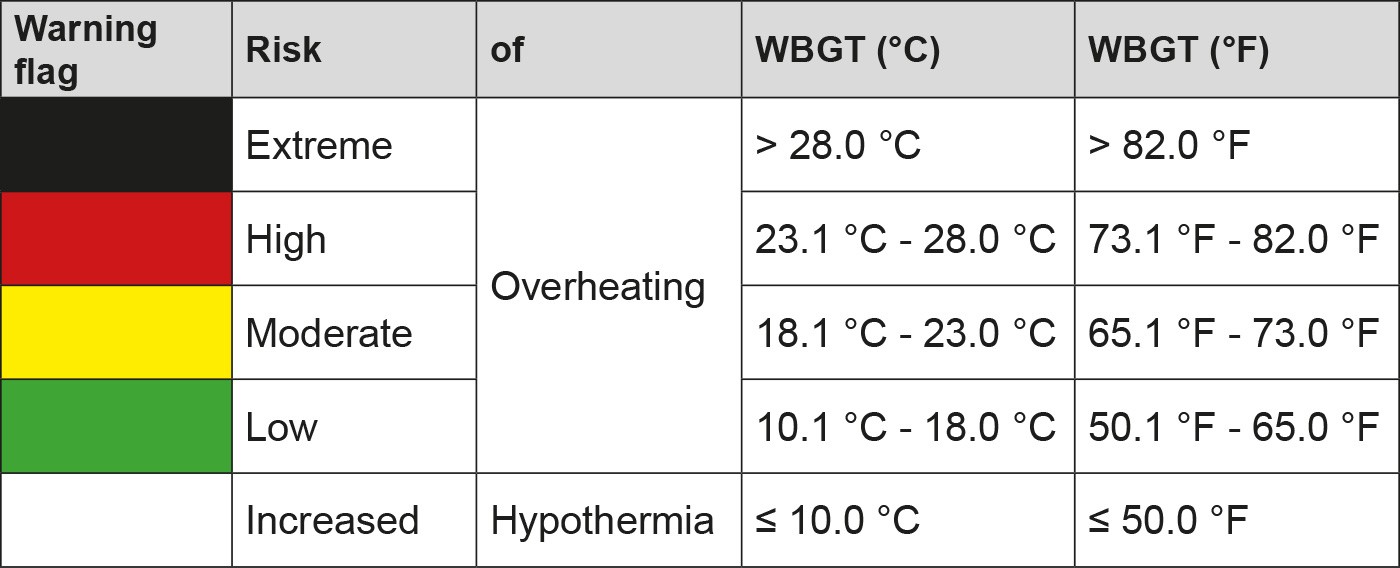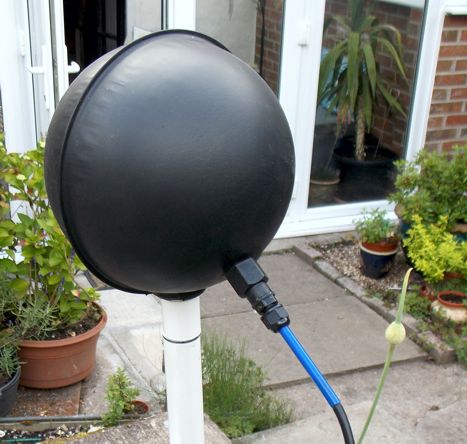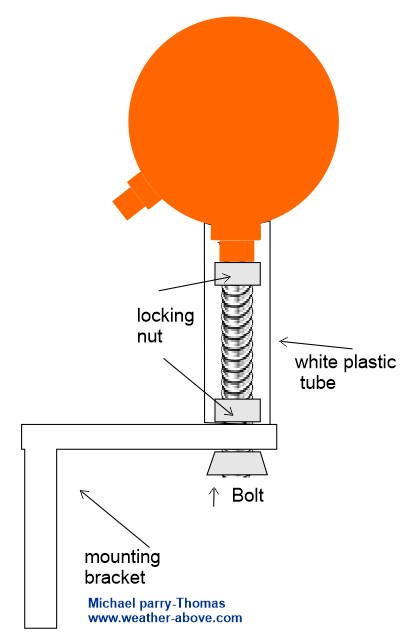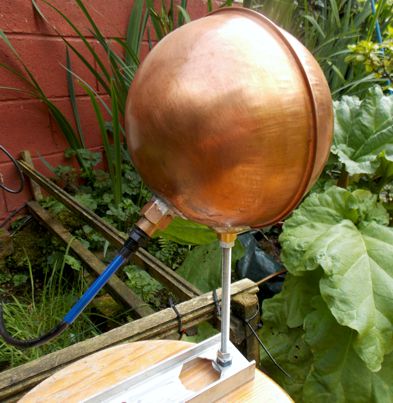
Measurement
The WBGT is measured by a simple three-temperature element device:
The natural wet-bulb temperature (Tw), which consists of a thermometer with its bulb covered with a wettened cotton wick supplied with distilled water from a reservoir. The cotton wick will always be wet, allowing continuous evaporative cooling of the thermometer's bulb, simulating the evaporation of sweat. The natural wet-bulb thermometer, like the black globe thermometer is not shielded from wind or radiation. This thermometer represents the integrated effect of humidity, wind and radiation.The black globe temperature (Tg), which usually consists of a 150 mm (6 inch) black globe with a thermometer located at the center. The black globe temperature represents the integrated effects of radiation and wind.The (shade) air temperature (Ta), which consists of a thermometer shielded from radiation - generally by being placed in a weather screen. It is the standard temperature normally quoted in weather observations and forecasts.Calculations
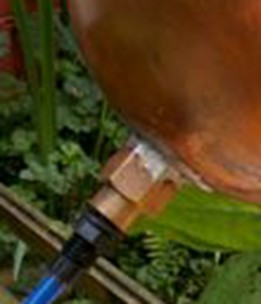
Welcome to Weather-Above
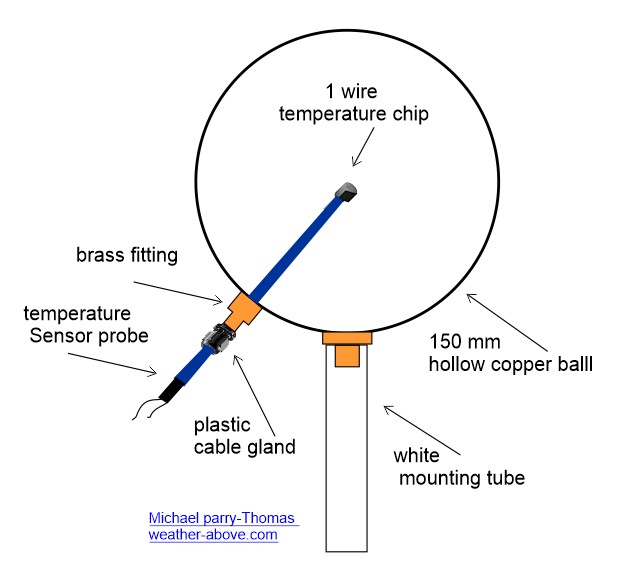
How to make a black globe sensor
The first thing you need to purchase is 150 mm hollow copper ball, these can be purchased from your local plumbing supplier, normally used as a float in water tanks. Next stage is to make a temperature probe to go inside the hollow globe this needs to be mounted so it is in the centre of the hollow copper globe. When making the 1 wire temperature probe make sure you use materials that can withstand high temperatures. Next stage was to drill a hole in the globe slightly smaller than the size of the plastic cable gland so it will screw into the globe and form a tight seal. Due to the very thin copper the cable gland didn't work very secure so I soldered a brass fitting onto the hollow copper ball then screwed in the cable gland. You then need to paint the copper with matt black outdoor paint recommend giving at least three coats.
Next stage was to insert the 1 wire temperature probe through the cable gland through the brass fitting and positioned it so it was in the centre of the hollow ball, then tightened the cable gland to grip the probe stop it from moving.
The last stage was mounting the black globe sensor, I used the existing brass mounting bush this is already soldered on the copper hollow ball. I found a bolt that would thread into the existing brass fitting. The bolt passed through a hole in a white aluminium L bracket , then locked into place with a locking nut. Next screw on the top locking nut and adjust it so that you can turn the ball onto the threaded bolt and lock in place.
Cut a plastic white tube to fit the length of the bolt this needs to cover all the locking nuts and bolt ,remove the hollow copper ball and slide over the bolt fixing the white plastic tube then re-screw on the copper globe so it's tightly sitting on top of the white plastic tube.
Please see images
150 mm hollow copper globe float
Second brass fitting
The three elements Tw, Tg, and Ta are combined into a weighted average to produce the WBGT.
WBGT = (0.7 × Tw) + (0.2 × Tg) + (0.1 × Ta)
Indoors, or when solar radiation is negligible, the following formula is used:
WBGT = (0.7 x Tw) + (0.3 x Tg)
The temperatures may be in either Celsius or Fahrenheit.
